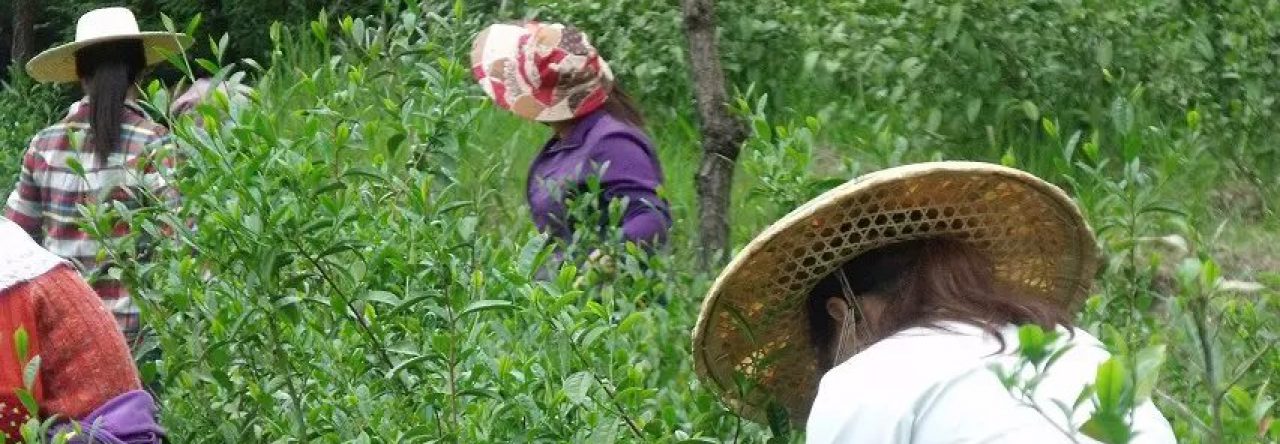 Tea is simple and yet is a such complex world that no one really know how deep and how broad it is. When I first wanted to learn more about tea and Chinese traditional tea ceremony in Taiwan in 1985, frankly speaking my views about tea was narrowed by Taiwanese tea only. Said good-bye to my family was a hard decision but there was nothing I could explain, except “love is blind”. But living in Belgium gave me a great opportunity to re-examine the cylindrical views about tea world that I thought I knew from a inside-out limitation to 360 degree.
Tea is simple and yet is a such complex world that no one really know how deep and how broad it is. When I first wanted to learn more about tea and Chinese traditional tea ceremony in Taiwan in 1985, frankly speaking my views about tea was narrowed by Taiwanese tea only. Said good-bye to my family was a hard decision but there was nothing I could explain, except “love is blind”. But living in Belgium gave me a great opportunity to re-examine the cylindrical views about tea world that I thought I knew from a inside-out limitation to 360 degree.
At that time I could only drink the Shou Pu (the web storage Ripped Puer) imported (actually it was more like smuggling) from Hong Kong and honestly speaking I disliked that aging musty flavor and taste at that time. The trip to Xishuangbanna in Yunan and the visit to then the ‘only’ Puer manufacturer in MengHai has opened my eyes and changed my mind completely. I then realized, there is another ancient boundless tea world for me to discover and there are more stories to hear and to tell.
I still remember during that visit to MengHai Tea Factory and LiMing Tea Factory, we could only visit the compressing and packing departments, but it was not allow us to visit the fermentation room for Shou Pu (Ripped Puer). The reason then was “it’s a top secret area”. Now a day, there are many photo’s and articles can be found about the past-secret territory.
But still there are many debates about when the production of Shou Pu was started, in 1927 or 1974? Actually there was no documentation about Shou Pu before 1974. According to the investigation document, it was not possible to deliver the loose Ripped Puer from Yunnan to Hong Kong; one horse can only carry 50kg loose leaf tea while the horse could carry 70kgs if it’s compressed to brick or cake before 1948. Unique geographical environment and transport conditions, therefore it decided the future of compressed tea cake to Hong Kong since 1948. One thing we are sure is there was no docu mentation about Shou Puer from the historical documents in Dali, Xishuangbanna and Puer regions or manufacturing record before 1974. Without ripped loose leaves, then there is no Ripped Puer tea cake, because once the Sheng (Raw) Puer being compressed, then it’s not possible to transform it to Ripped Puer through the artificial fermentation process any more. The cost of storaging the loose leaves is much higher if they could compress it. So the compressed Shou Pu started from Hong Kong in the 50’s.
mentation about Shou Puer from the historical documents in Dali, Xishuangbanna and Puer regions or manufacturing record before 1974. Without ripped loose leaves, then there is no Ripped Puer tea cake, because once the Sheng (Raw) Puer being compressed, then it’s not possible to transform it to Ripped Puer through the artificial fermentation process any more. The cost of storaging the loose leaves is much higher if they could compress it. So the compressed Shou Pu started from Hong Kong in the 50’s.
In the time of cultural revolution, there was no direct communication between Hong Kong and Mainland China. But still soon the State-Own company learnt about how Hong Kong was able to accelerate the fermentation by using the artificial fermentation process, so they ordered the tea factory in Xia Guan to begin the experiment of using the artificial fermentation process for the exportation. That began the life of Shou Pu.
How is the quality of artificial fermented Shou Pu is decided both by the piling techniques and the storage time, and of course not to forget how the quality of the tea base lays the foundation to the aging process. The advantage of Sheng (Raw) Pu is its solid natural flavor and the surprising transformation during the storage, there is a special flavor and taste from the natural aging process; but the down side is the natural transformation takes time. On the other hand, Shou Pu allow us to enjoy the mellow flavor and taste in about 5 years and above; but its down side is tea leaves were damaged during the piling-fermentation process and it often is not suitable to store for too long.
So my learning journey about Puer began in 2002. Did I make mistakes in selecting and buying Puer tea? Of course, it’s necessary. Otherwise I could have another learning block if it’s not because of those stupid decision I made. Since I don’t have very deep pocket, so I couldn’t afford to buy those ‘trendy fashion aged or antique Puer’, so I decide to get old together with my tea and enjoy the surprising journey of transformation together. It is like a friend said It is not possible to achieve the perfection state in anything on his/her own. The ancient world of Puer tea definitely is another domain where there is anyone can hardly master its knowledge perfectly. Will I still make mistakes in Puer tea? Of course, the chance is big; but it won’t stop me from learning and enjoying the relearning.























